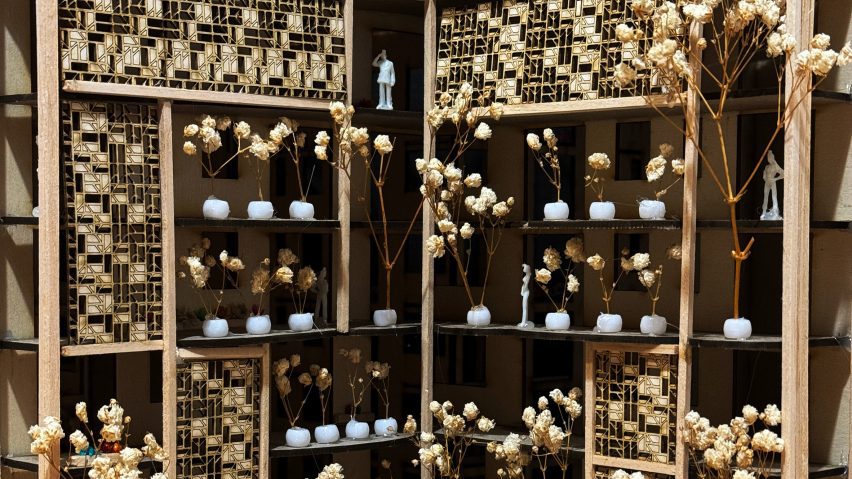
New York Institute of Technology spotlights ten student design projects
Dezeen School Shows: a lighting collection that is made from bioplastics and promotes sustainable manufacturing processes is included in this school show by the New York Institute of Technology.
Also included are 3D-printed panels crafted from clay and mycelium and a park that intends to be accessible for those who are neurodiverse.
New York Institute of Technology
Institution: New York Institute of Technology
School: Architecture
Course: MSHD health, Design Studio and Seminars
Tutors: Athina Papadopoulou, Christian Pongratz, Mario Medina and Alessandro Melis
School statement:
"In this nine-month program, health is viewed as an ecosystem addressing the impact of the built environments and materials on human health, as well as care-related systems, services, prototypes and devices.
"The core studio of the program, Atypical Architectures, is informed through complementary courses and skill-building workshops that involve an in-depth exploration of focus topics.
"Atypical Architectures, taught by Professors Papadopoulou and Pongratz, is a two-semester design research studio addressing matters of neurodiversity and inclusion through the creation of products and environments for non-neurotypical users.
"The studio is conducted in collaboration with occupational therapist Professor Alexander Lopez, director of the non-profit organization Inclusive Sports and Fitness, which aims at children and adolescents with Autism Spectrum Disorder (ASD).
"The Atypical Architectures studio implements an experience-based, human-centred methodology that allows students to reflect on their own affective and sensory experiences and derive insights and conclusions from qualitative and quantitative analysis through onsite and user-based studies.
"Through this MSAHD program, students build key competencies across computation and materials needed for designing preventive, therapeutic and ultimately healthy environments and interactions.
"Students also build on each other's varied backgrounds as they enter the program with diverse skills and expertise from design fields, engineering, medical and health sciences, materials science, business, and natural and social sciences.
"Together with their diverse and inclusive faculty of experts, students become empowered to address health from a systemic and embodied perspective, targeting aspects of the global environmental crisis or mental and physical disabilities through advanced material, technological and design solutions.
"Research in the program involves computational design, programmable materials, biomaterials, sensors and interaction, generative and circular design solutions, inclusive design, affective mapping methods, and human and environmental health."
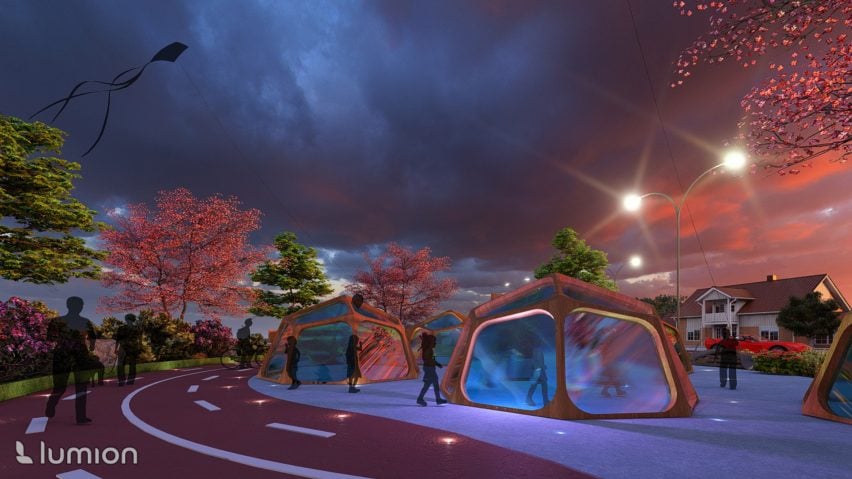
Inclusive sensory park in the town of Islip, Long Island by Neda Momeni
"Imagine a public space designed to help children with social difficulties, where they thrive, connect and grow towards better health and wellbeing.
"The project's goal is the creation of an inclusive and therapeutic park in Islip town, in Long Island, New York, catering to individuals of all ages, with a special focus on those with neurodiverse conditions and disabilities.
"The park is designed to be a stimulating environment engaging all five senses through educational tools and interactive games, promoting socialisation and creativity.
"The park also includes sensory pods, which, when sensing movement, activate a colourful LED matrix, turning the space into a magical playground of changing colours."
Student: Neda Momeni
Course: MS in Health and Design Research Studio
Tutors: Athina Papadopoulou and Christian Pongratz
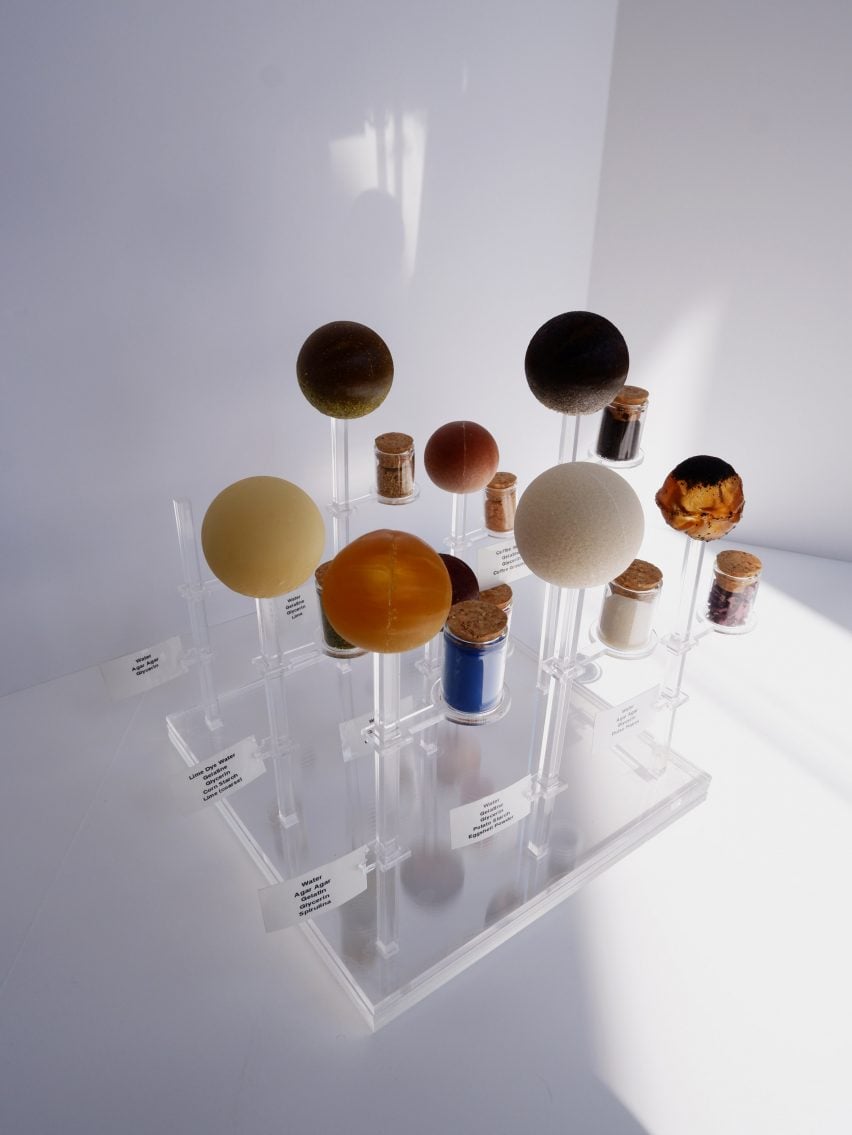
Biospheres by Firdaus Khatoon
"This project showcases material experimentation on bio-based materials for product design and manufacturing.
"Materials made from food waste such as coffee grain and fruit peels are combined with humble materials such as glycerin and gelatin to create biodegradable plastics.
"The biospheres embody a captivating fusion of art, science and sustainability, fostering awareness and engagement in environmental conservation efforts.
"Crafted from eco-friendly materials, the algae spheres feature captivating hues.
"They serve as a testament to the potential of utilising sustainable resources for both indoor and outdoor displays for a multitude of venues, inspiring consideration for environmentally conscious design choices."
Student: Firdaus Khatoon
Course: MS in Health and Design Research studio and seminar on materials – collaboration
Tutors: Mario Medina, Athina Papadopoulou and Christian Pongratz
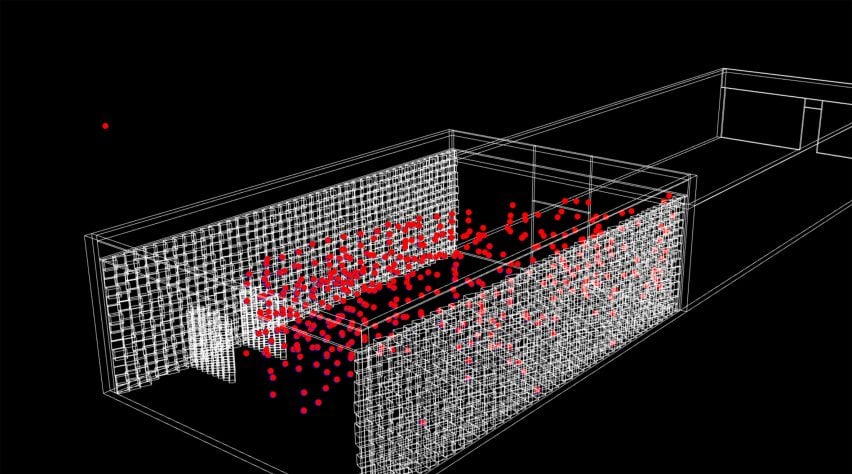
Biobarriers by Joel Stuart
"Biobarriers explores the use of bio-based and earth-based materials for acoustic insulation specifically for the purpose of enhancing the experience of neurodiverse users.
"3D-printed panels made from clay and cast panels made from mycelium have been tested in a chosen facility hosting training programs for individuals with Autism Spectrum Disorder (ASD).
"The facility includes treadmills and other gym equipment and is designed as an open space.
"Some individuals with ASD are often overly sensitive to sound which can lead to higher stress and distraction.
"Biobarriers were tested using sound simulation software, measuring the effectiveness of this new bio-based intervention through an acoustic space analysis."
Student: Joel Stuart
Course: MS in Health and Design Research Studio
Tutors: Athina Papadopoulou, Christian Pongratz and Megni Zhang
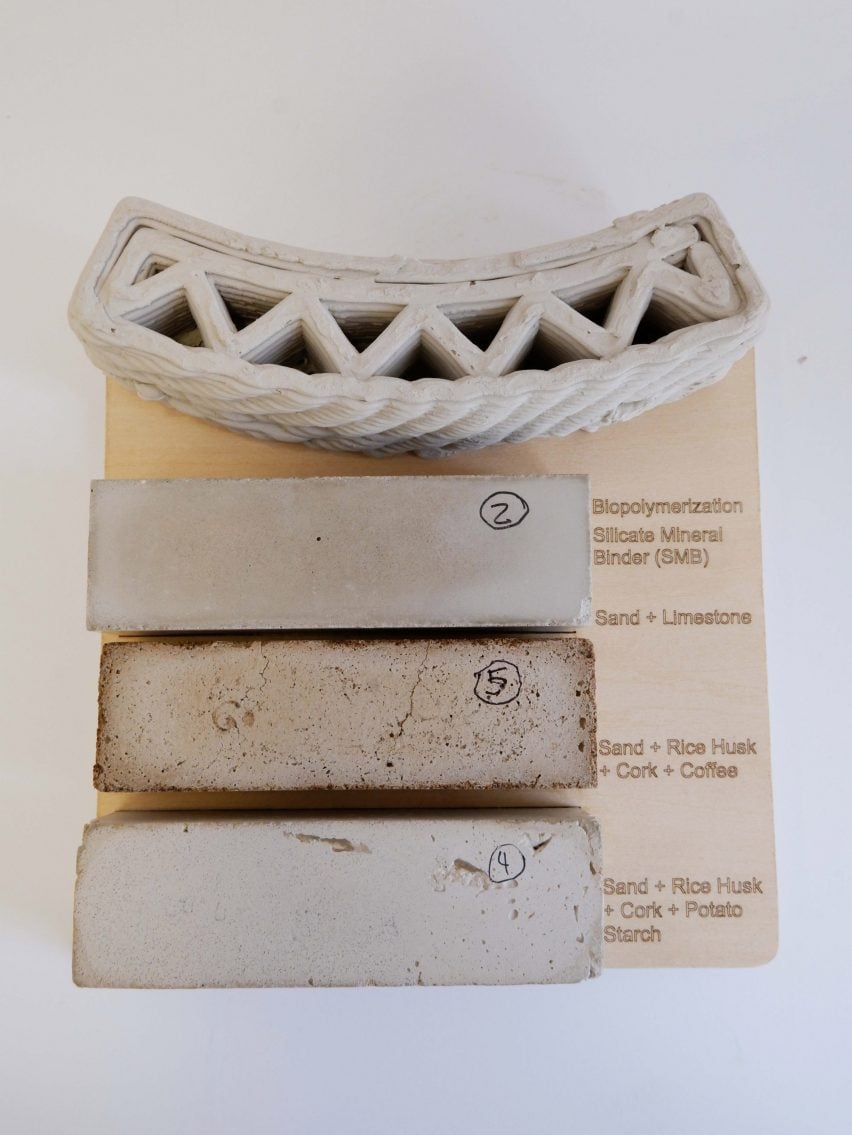
Arts and Wellness Centre in Peccioli, Italy: A Circular Approach to Sustainability and Health: Wall Study Model for 3D Earth Construction by Miriam Barbosa
"The proposed Arts and Wellness Centre in Peccioli, Italy, exemplifies the town's ambition to serve as an urban living lab of environmental sustainability and social cohesion through the arts.
"Located on the fertile grounds of Tenuta Belvedere, east of Fonte Mazzola, this initiative is envisioned as a comprehensive, community-focused space that promotes wellness, healing and artistic exploration.
"The project emphasises urban metabolism techniques, the promotion of green infrastructure and the circular utilisation of local, eco-friendly building materials like clay and stone – the centre is built underground with minimal landscape interference and zero oil reduction.
"All soil is used for 3D earth construction to develop an ecological village, supporting and accommodating visitors – the clay wall study in display reflects the 3D earth construction proposed.
"The Arts and Wellness Centre is envisioned as a facility that promises to be a paradigm for future urban spaces that prioritise the well-being of their inhabitants and the ecosystem's preservation."
Student: Miriam Barbosa
Course: MS in Health and Design Research Studio
Tutors: Christian Pongratz, Athina Papadopoulou, Mario Medina and Alessandro Melis
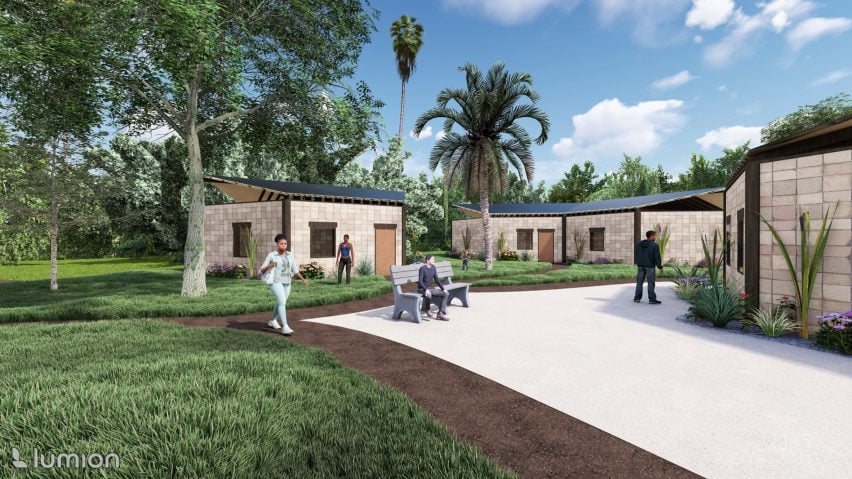
Informal Settlements of Santo Domingo: Using bio-based materials to improve the housing conditions of Santo Domingo by Angelina Badolato
"The current barrios of Santo Domingo are lacking many infrastructures in various vital areas such as health, education and housing – these sectors are key to living a healthy life.
"The lack of structure is primarily due to economic inequalities that face the country, which is one of the main problems causing the growing housing deficit in Santo Domingo.
"The current living conditions of the informal settlements are very poor; huts made of mostly metal sheets, wood boards and concrete blocks are not a suitable or safe place for people to be residing in.
"This project utilises local materials such as agriculture waste and earth-based materials to offer sustainable and affordable solutions.
"Hands-on material experiments of 3D-printed clay, geopolymers and food waste additives are part of the thesis research methodology, as well as typological and urban exploration of the new bio-based residential proposal, aiming at healthier futures for the people of Santo Domingo."
Student: Angelina Badolato
Course: BArch Undergraduate Thesis studio section of Health and Design
Tutors: Athina Papadopoulou and Christian Pongratz
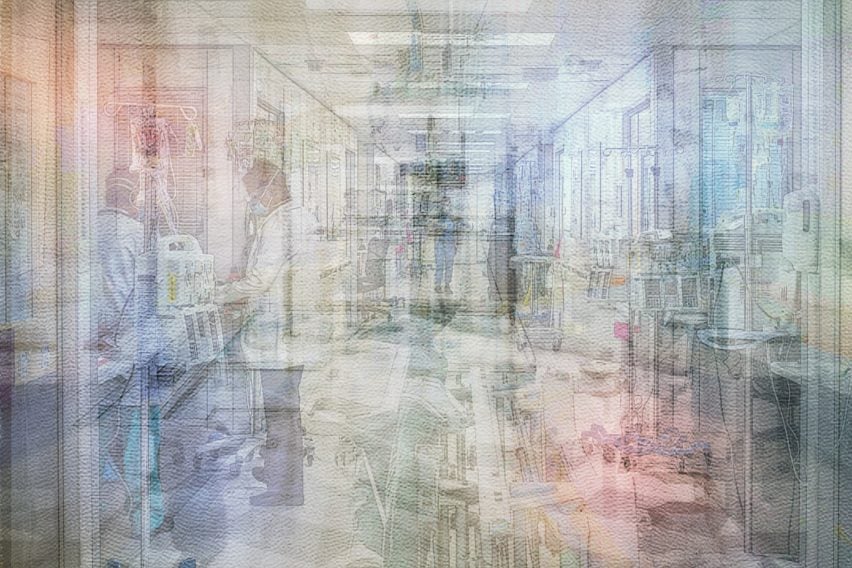
Sensory Mosaics by Theresa Mark
"This thesis project explores how material curation and interactive design can make the patient experience in a care environment less distressing, particularly through the neurodivergent perspective.
"To respond to the therapeutic effect of sensory input, found in precedents like Snoezelen, as well as the economic constraints of sensory-informed design in care spaces, the sensory mosaic intervention can be built of modular units that combine tactile and visual stimuli and is deployable at various scales, offering accessible sensory modulation in waiting, transition and patient rooms in standard clinical environments.
"The modular nature of the intervention bridges the product and architectural scales, offering the same environmental alteration of a traditional sensory room when more units are deployed, but not limiting the installation to a specific space or price range.
"The project contributes to a larger discussion about how to bring inclusive design to wider applications through material exploration and user research."
Student: Theresa Mark
Course: MS in Health and Design Research Studio
Tutors: Athina Papadopoulou and Christian Pongratz
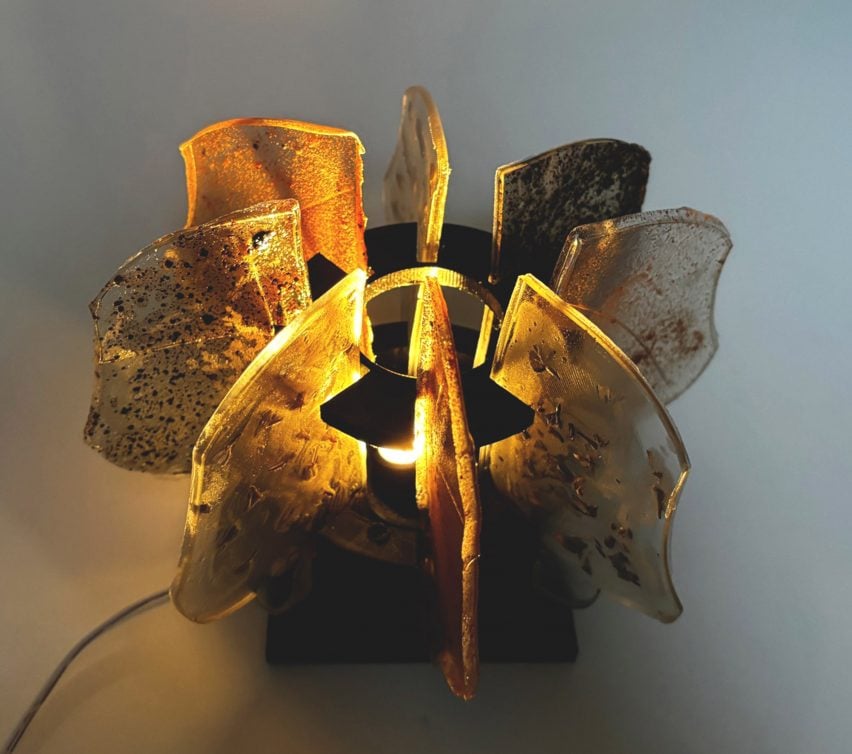
Bio Plastics and Bio Dyes for Light Sensitivity by Emily Sturges
"Historically, materials have been perceived as the last element of an entire system, becoming the finishing touch to a product, space or building to meet certain aesthetic.
"While certain materials are selected based on their intrinsic properties and impact on human health, examining materials from a systemic perspective and a circular material infrastructure viewpoint could be beneficial as it can potentially lead to more resilient ecosystems, reducing carbon footprint and saving resources, while ultimately promoting health and wellbeing through reuse, repair and recycling.
"This project explores the use of bioplastics to produce lighting products for sensitive users.
"Custom-made material compositions have been cast in fabricated moulds to create lighting with warmer and natural colours."
Student: Emily Sturges
Course: MS in Health and Design seminar on Materials
Tutor: Mario Medina
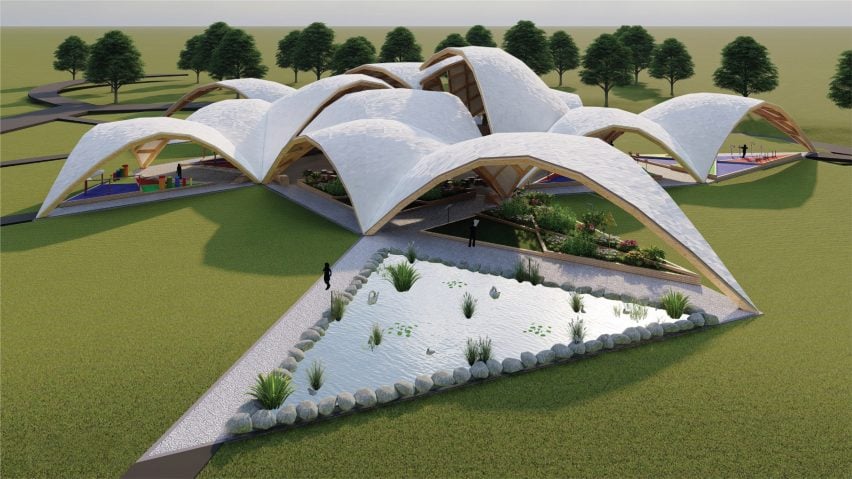
Inclusive Sensory Park in Queens, NY by Angelo Collura, Michael Lacobucci and Nicolas Donohue
"This project proposes a sensory-inclusive park in Queens, New York, including various parks, each focused on a specific sense.
"The oral motor park offers activities to strengthen oral motor skills, such as talking tubes, windmills and bubbles – each of these activities utilises oral motor movements to strengthen oral muscles – the smell park acts more as a garden where there are a number of planting beds with a variety of different flowers that offer different scents.
"Users also have the opportunity to interact with this park and take part in gardening – the touch park consists of multiple natural textures and activities that correspond with it.
"This park is divided up into these four areas using the geometry from the structure – the sight park offers more of a relaxing environment with a pond being the centre focus, which also attracts wildlife as well as housing fish for users to interact with visually.
"The final park is the sound park which offers a variety of musical equipment fit for this specific area that users can interact with – the centre space is outlined by the thin shell structure and the parks themselves, which further encourages the users to socially interact with one another by offering oversized and different weighted blocks."
Students: Angelo Collura, Michael Lacobucci and Nicolas Donohue
Course: BArch Thesis studio section of Health and Design
Tutors: Athina Papadopoulou and Christian Pongratz
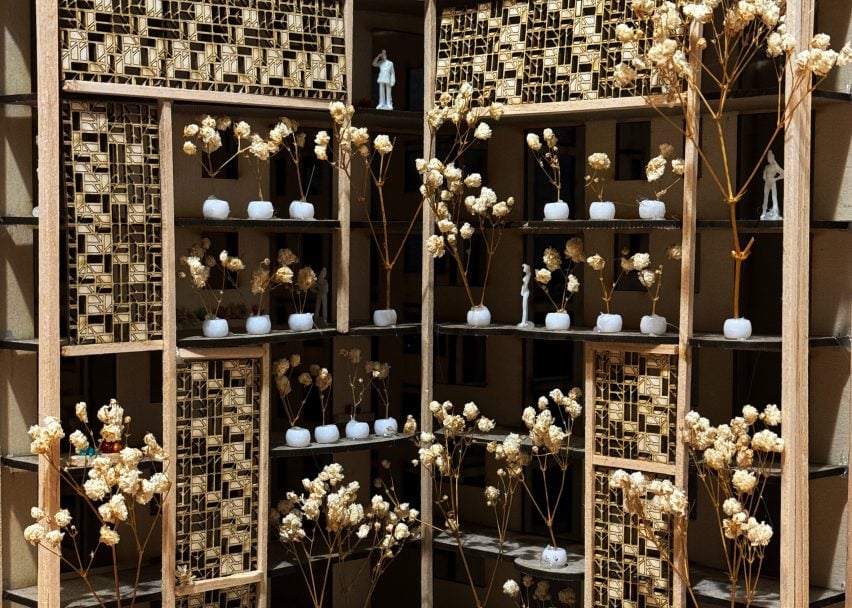
Urban Microfarms by Christine Chong
"As our urban areas grow denser and there is less land for agriculture, there is a higher demand for food and crops – to keep up with the economy and the issue of less rain due to global warming, farmers are adding pesticides and chemicals to make the soil fertile.
"Therefore, this soil-driven produce is 'unhealthy' and could potentially lead to diseases – to transport them to the cities, motorised vehicles are used, which contribute to increased carbon emissions and global warming.
"This project proposes the integration into existing buildings of personalised micro-farms for residents in an automated, fully climate-controlled building skin.
"The residents in the neighbourhood can cultivate their own food on the balconies, which reduces cost, transportation and carbon footprint, while also improving air quality.
"The chosen site of intervention is in Brownsville, Brooklyn – the project involves an environmental analysis of the system, a proposal of specific crops to be integrated through hydroponic and aeroponic systems, a modular added structure to enhance living conditions allow for plant growth and a 3D-printed clay brick planter system."
Student: Christine Chong
Course: BArch Thesis studio section of Health and Design
Tutors: Athina Papadopoulou and Christian Pongratz
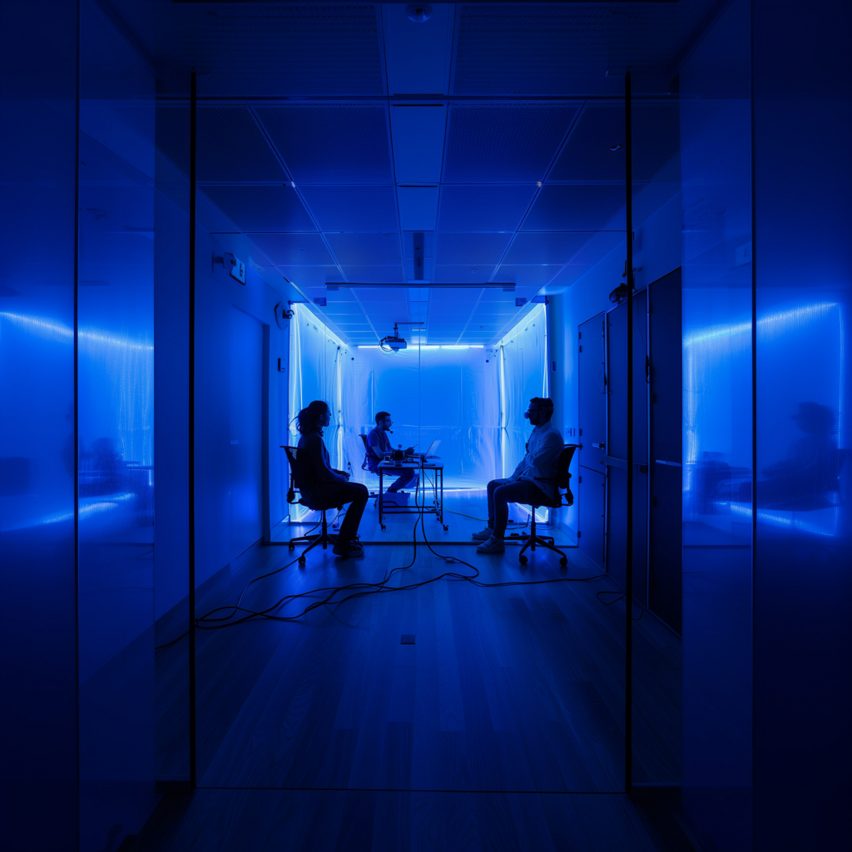
Chromatic spatial interventions: Investigating the psychophysiological impact of light colour by Ahmed Sania and Hassan Waqar
"This research study aims to evaluate the impact of blue-enriched white and red light exposure on the performance, alertness and stress levels of young adults during work hours.
"By conducting controlled experiments and collecting data, the study intends to highlight the unsuitability of fluorescent lighting in workspaces and identify which lighting conditions are most effective in enhancing productivity and mitigating fatigue, particularly for individuals struggling with multitasking.
"The ultimate objective is to utilise the findings to inform architectural designs for working spaces, tailored to support optimal cognitive function and wellbeing, with potential applications in healthcare settings to aid night-shift workers like nurses in maintaining performance and alertness."
Students: Ahmed Sania and Hassan Waqar
Course: MS in Health and Design Research Studio
Tutors: Athina Papadopoulou and Christian Pongratz
Partnership content
This school show is a partnership between Dezeen and New York Institute of Technology. Find out more about Dezeen partnership content here.